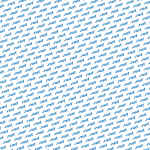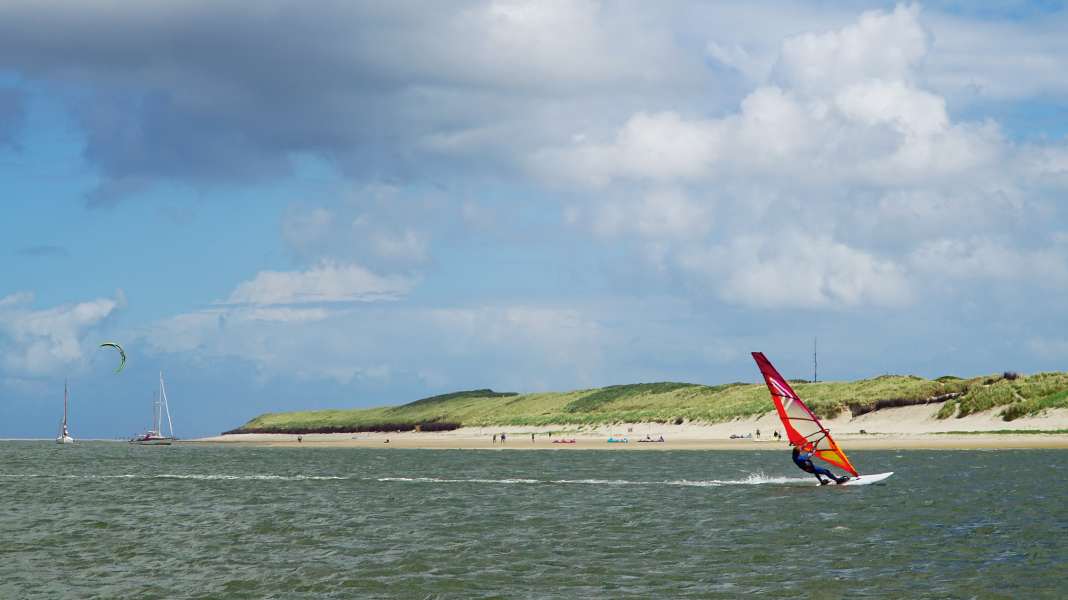
Leisure stress! Always chasing the wind, from spot to spot, keeping an eye on the wind update on your smartphone. Delays? Idle time? Not planned. Perhaps a short holiday on Spiekeroog is just the thing to ground stressed surfers. Brilliant surf spots of all kinds are within a 15-minute radius of your home - on foot, not by car. Welcome to the analogue world!
The clocks on Spiekeroog seem to stand still, or at least tick very slowly. This is noticeable right before the crossing in Neuharlingersiel, before you have even boarded the ferry. The transport of surfboards is still an analogue peculiarity here, with the boards being carried onto the foredeck by hand by the crew and the rest of the equipment, together with countless city scooters, being heaved roughly into container boxes on deck by crane. "Please be careful with the windsurfing boards, they're very delicate!" we shouted to the sailor, but the main thing was that everything came with us. There are two daily ferries to the mainland, no mass tourism, no cars, no large supermarkets, and there are hardly any bicycles on the island. This certainly doesn't bother me, as you can do almost everything on foot anyway and it's quite pleasant to do without all the stress of the mainland.
Frisian charm
The village itself is small, as only 800 inhabitants live on the island all year round. Because the village is located in the centre of the island and not, as on many other East Frisian islands, at what is now the western end, the village was not destroyed by storm surges and has been preserved with its many beautiful Frisian houses and other traditional buildings, which gives the island a very special and unique charm. In addition to your own surf gear - unfortunately there is no surf school here - a surf cart for transporting equipment is another "must have" in order to cover the 1.5 kilometres from the village to the various spots without being flat beforehand. You can either bring your own surf trolley (you can find inspiration for this in this booklet) or use one of the countless trolleys that can be found all over the island and are even provided by many accommodation providers.
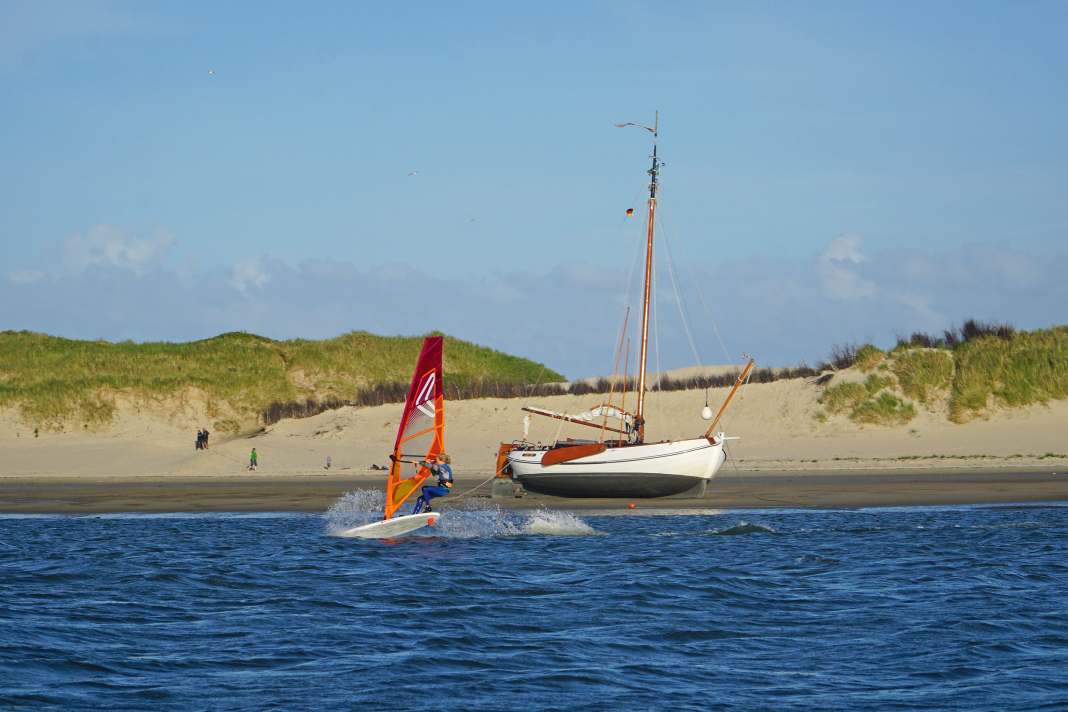





The beautiful Spiekeroog campsite, which is idyllically situated in the dunes at the western end in the immediate vicinity of the spot, is also very interesting for surfers. The campsite seems to be well frequented by windsurfers and kitesurfers in summer, as we can see from the many wetsuits and surf equipment next to the tents. This is no coincidence, as you only have to cross the main dune to reach the island's main spot. From the campsite, you can therefore easily get to the spot without a surf trolley if necessary. Another plus point of the campsite is the small but well-stocked supermarket, where you can get everything you need from bread rolls to camping gas and toothbrushes. For the party animals among the surfers, there is also the "Old Laramie" at the west end, a mixture of café, bar, discotheque and kitesurfing school. There's always something going on here in the evening, so it's always worth a visit despite the somewhat moody host.
General information Spiekeroog
Wind, weather & neoprene recommendation:Spiekeroog lies entirely in the westerly wind zone and is very reliably ventilated by low pressure systems. The best time to go is autumn, when you can expect a gliding wind on every second day on average and temperatures are still quite mild, but even in summer long periods of calm are the exception. In July and August, with average temperatures of 20 degrees in the air and 18 degrees in the water, a 4/3 wetsuit is fine, while in spring and autumn you should also pack a 5/3 suit and shoes or a bonnet. In principle, all wind directions can be used on Spiekeroog, but the best conditions for flat water and waves are found in the very frequent westerly winds.
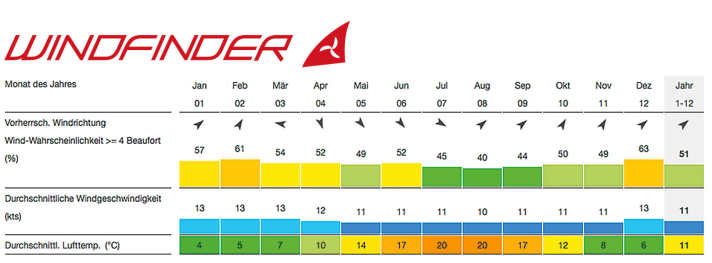
Journey: In Neuharlingersiel, you can park your car in a paid car park and walk to the ferry in 15 minutes. If you don't want to lug your car, unload passengers and luggage at the pier and then park. Departure times depend on the tide, the timetable and all information can be found at www.spiekeroog.de/urlaub-planen/anreise.html. The accommodation on Spiekeroog is all within walking distance. A surf trailer or handcart can serve you well, and of course you can also have your luggage conveniently collected from the ferry terminal. Information on this can be found at www.spiekeroog.de/urlaub-planen/gepaeckservice
Living & camping: All information about the campsite, which is beautifully situated in the dunes, can be found at www.spiekeroog.de/urlaub-buchen/zeltplatz.html. The campsite is always open between April and September. In Spiekeroog, there is a large selection of different accommodation options on the relevant internet portals - from exclusive holiday homes and rooms in small hotels to bed & breakfasts. You can also find what you are looking for here on the website www.spiekeroog.de/urlaub-buchen
Surf schools & shops: There are as many of them here as there are cars - none at all! So there's no getting round having your own material.
The best spots
On Spiekeroog, there is no spot or spots that you can head for with the help of a supposedly "up-to-date" spot guide depending on the prevailing conditions. There are simply too many variables that play into the equation, because like everywhere else in the Wadden Sea, there is only one real constant here and that is the tidal current, which comes in for six hours and then goes out again for six hours. The area around the island is constantly changing due to the multitude of volatile environmental influences. This means that new sandbanks or bars appear seemingly out of nowhere, which can create new promising spots.
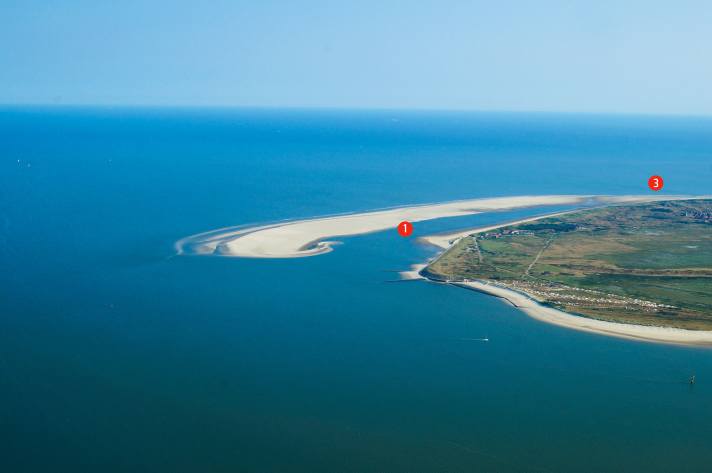

Nevertheless, three main spots have established themselves in recent years, which are also constantly changing but retain their basic functionality and offer something for every surfer, whether windsurfing rookie, hobby freerider, freestyle crack or hardcore waver.
1) Westend Bay
Spiekeroog's main spot is in the west of the island. The crescent-shaped bay is a true multi-talented spot! Its shape and functionality are very reminiscent of the main spot on Borkum. The main difference is that there are no "disturbing" nature reserves in and around Spiekeroog Bay that restrict surfing fun. This means that the sandbank can be travelled on freely from all directions and even entered - extremely practical for watching, taking a break or taking photos.
Due to its crescent shape, the spot offers super shallow water conditions with winds from south to west to north. From the shore, the entrance via the narrow beach is very shallow, whereas the sandbank on the other side drops very steeply down to four metres in places, so that you can get within a few decimetres of the sandbank. Freeriders and racers can therefore choose long fins and still surf very close to land. At high tide and with a westerly wind, you can surf almost the whole way up to the north beach. At high tide, the offshore sandbank is often washed over, which makes it possible to cross with short freestyle and wave fins. Coming from the shallow water, you can then head over the sandbank towards the open but usually moderate North Sea waves with plenty of speed. In this way, wave and shallow water spots merge. At low tide, on the other hand, you have to be careful on the island side from the dune passage to the western end so that you don't come into contact with the bottom with longer lane holders. Due to the shallow entry, the lack of current and the almost closed shape, the spot is also ideal for beginners and advanced surfers. The only drawback: due to the local kite school, you sometimes have to make friends with the kitesurfers here.
In the very south of the bay, directly at the opening to the sea, a 1-a freestyle spot appears about an hour before to an hour after low tide: Exactly in the extension of the penultimate groyne, a sandbank about 300 metres long almost completely closes off the bay. Small but clean waves run through the opening, which is then only 50 metres wide and can be used perfectly as kickers for all kinds of air and power moves. Although the spot doesn't work for two hours, it's definitely worth the wait so that you'll remember the sessions here for a long time to come. Unfortunately, you have to watch out for the nasty oysters lurking in the groyne field - shoes are advisable!
2) South-Priel
In the shelter of the island, there are a number of shallow water spots that - when the otherwise uneven gliding noises of the board turn into a continuous hissing sound at a distance of a few metres from the sandbank - make the heart of every freerider and freestyler beat faster. Of particular interest to this target group is certainly the "South Priel", which we have named a relatively wide and deep
Priel, which runs almost in a straight line from west to east and is therefore suitable for wind directions around south or when hacking from the north. The Priel ends on the east side in nature conservation zone 1, so you can't go all the way round the Priel and should jibe or tack at the second yellow buoy at the latest. However, the approach to the spot is somewhat arduous. The best way to reach the Priel from the harbour is by a long mud march or by crossing up from the bay.
3) North beach
On the other side of the island, the swell from the North Sea rolls in almost unhindered and literally makes the water bubble. In the west of Spiekeroog towards Langeoog in the Otzumer Balje, the tidal currents are extremely strong. Things are less rough and therefore much more organised on the island's northern beach, where the swell can thunder onto the beach without disturbing shallows. The bars in front give you the opportunity to build up enough speed in the manageable shorebreak before heading for the thick jump ramps that adrenaline-seeking wave cracks crave. Although we were a little unlucky with the prevailing wind direction on our trip this year and the wind was much more southerly than forecast, we all agreed on the island's excellent wave potential. The waves break cleanly, sometimes allowing for several frontside turns and can get as high as a mast in strong westerly winds. We liked the waves directly in front of the eastern end of the bay at the level of the guarded beach, where the beach takes a small southern bend. If there is not enough wind, the waves here are also good enough for a good wave SUP or surf session or two.
